Dry Type Transformer Types: A Comprehensive Guide to Modern Power Distribution Solutions?
Are you confused about the different types of dry type transformers? You’re not alone. Many of my clients struggle to understand the options available for their power distribution needs.
Dry type transformers come in several types, including cast resin, vacuum pressure impregnated (VPI), open-wound, and encapsulated. Each type has unique features suited for different applications, from indoor installations to industrial settings. Understanding these types is crucial for choosing the right transformer for your project.
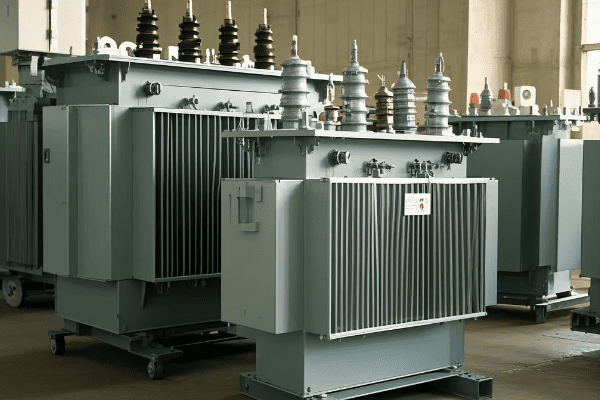
In my years of experience in the power industry, I’ve worked with all types of dry transformers. Let’s explore each type in detail to help you make an informed decision for your power distribution needs.
What are the main types of dry type transformers?
Have you ever wondered about the different types of dry transformers available? I often get this question from clients who are new to power distribution systems.
The main types of dry type transformers are cast resin, vacuum pressure impregnated (VPI), open-wound, and encapsulated. Each type has its own manufacturing process, characteristics, and ideal applications. The choice depends on factors like environment, load requirements, and budget.
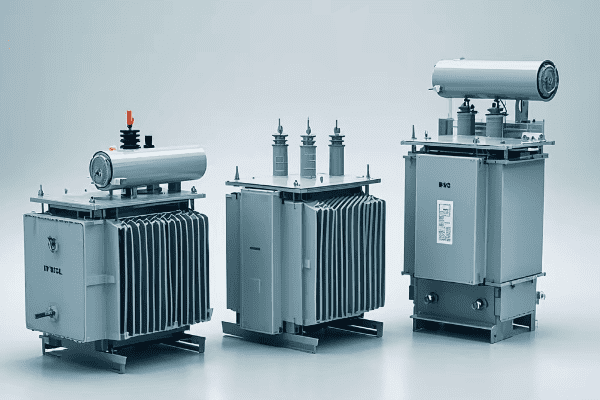
Let’s dive deeper into each type of dry transformer. My experience with these different types will help you understand their unique features and applications.
Cast Resin Transformers
Cast resin transformers are a popular choice for many of my clients. Here’s why:
- Manufacturing Process: The windings are cast in epoxy resin under vacuum.
- Characteristics: Excellent moisture resistance, high mechanical strength.
- Applications: Ideal for harsh environments, marine applications, and areas with high humidity.
I once installed a cast resin transformer in a coastal industrial plant. Its resistance to moisture and salt air made it perfect for the challenging environment.
Vacuum Pressure Impregnated (VPI) Transformers
VPI transformers offer a good balance of performance and cost:
- Manufacturing Process: Windings are impregnated with varnish under vacuum and pressure.
- Characteristics: Good thermal properties, cost-effective.
- Applications: Suitable for most indoor industrial and commercial applications.
Open-Wound Transformers
These are the simplest type of dry transformers:
- Manufacturing Process: Windings are simply coated with varnish.
- Characteristics: Lightweight, good for low humidity environments.
- Applications: Used in some industrial settings where environmental protection is not a major concern.
Encapsulated Transformers
Encapsulated transformers offer enhanced protection:
- Manufacturing Process: Entire core and coil assembly is encapsulated in epoxy.
- Characteristics: Excellent protection against moisture and contaminants.
- Applications: Ideal for outdoor installations or very harsh environments.
| Type | Key Feature | Best For |
|---|---|---|
| Cast Resin | Moisture resistant | Harsh environments |
| VPI | Cost-effective | General indoor use |
| Open-Wound | Lightweight | Low humidity areas |
| Encapsulated | Fully protected | Outdoor/harsh conditions |
In my experience, understanding these types is crucial for selecting the right transformer for your specific needs. Each type has its strengths, and the best choice depends on your unique situation.
How do cast resin and VPI dry type transformers differ?
Clients often ask me about the differences between cast resin and VPI transformers. It’s a common dilemma when choosing a dry type transformer for their projects.
Cast resin transformers have windings encased in epoxy, offering superior moisture and contamination resistance. VPI transformers have windings impregnated with varnish, providing good performance at a lower cost. Cast resin is better for harsh environments, while VPI is suitable for most indoor applications.
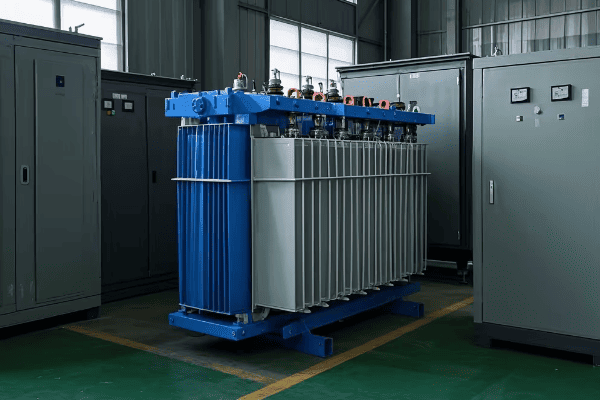
Let’s explore the key differences between these two popular types of dry transformers. My experience with both types will help you understand their unique characteristics.
Manufacturing Process
The manufacturing process is a key differentiator:
-
Cast Resin:
- Windings are placed in a mold.
- Epoxy resin is poured and cured under vacuum.
- Results in a solid, void-free insulation.
-
VPI:
- Windings are wound with insulating material.
- Entire assembly is placed in a vacuum tank and impregnated with varnish.
- Process is repeated several times for thorough impregnation.
I once visited a transformer manufacturing plant. The precision required for the cast resin process was impressive, while the VPI process was more straightforward but still effective.
Environmental Resistance
Environmental factors often guide the choice between these types:
-
Cast Resin:
- Excellent resistance to moisture and contamination.
- Can withstand harsh environments, including outdoor installations.
- Suitable for high humidity areas.
-
VPI:
- Good resistance to normal indoor environmental conditions.
- Less suitable for very humid or contaminated environments.
- Typically used in controlled indoor settings.
Thermal Performance
Heat management is crucial for transformer longevity:
-
Cast Resin:
- Excellent heat dissipation due to solid insulation.
- Can handle higher temperature rises.
- Better short-circuit strength due to epoxy encapsulation.
-
VPI:
- Good thermal performance for most applications.
- May require additional cooling in high ambient temperature conditions.
- Slightly lower short-circuit strength compared to cast resin.
Cost Considerations
Budget often plays a role in the decision:
-
Cast Resin:
- Higher initial cost due to more complex manufacturing process.
- Lower maintenance costs over time.
- Longer lifespan can offset higher initial investment.
-
VPI:
- Lower initial cost.
- May require more frequent maintenance in challenging environments.
- Good value for standard indoor applications.
| Feature | Cast Resin | VPI |
|---|---|---|
| Moisture Resistance | Excellent | Good |
| Environmental Tolerance | High | Moderate |
| Initial Cost | Higher | Lower |
| Maintenance | Low | Moderate |
| Typical Applications | Harsh environments, outdoors | General indoor use |
In my experience, the choice between cast resin and VPI often comes down to the specific environmental conditions and budget constraints of the project. For critical applications in challenging environments, I usually recommend cast resin. For standard indoor applications where cost is a significant factor, VPI transformers often provide the best value.
Which dry type transformer is best for indoor applications?
When clients ask me about indoor transformer solutions, I often recommend dry type transformers. But which type is best? It’s a question I hear frequently.
For most indoor applications, Vacuum Pressure Impregnated (VPI) dry type transformers are the best choice. They offer a good balance of performance, cost-effectiveness, and safety. VPI transformers are suitable for various indoor settings, from commercial buildings to light industrial applications.
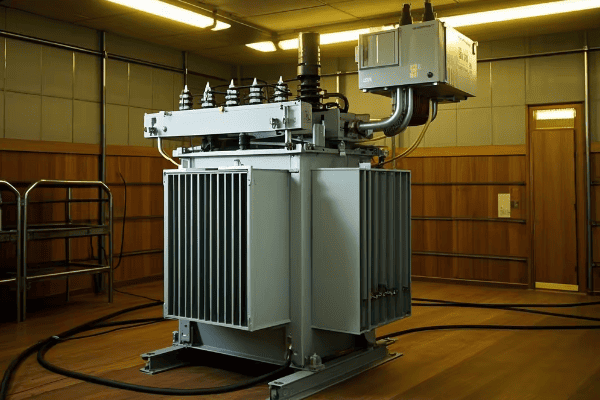
Let’s explore why VPI transformers are often the top choice for indoor use and when other types might be more suitable. My experience with various indoor installations will provide valuable insights.
Why VPI Transformers Excel Indoors
VPI transformers have several advantages for indoor use:
-
Cost-Effectiveness:
- Lower initial cost compared to cast resin transformers.
- Good performance for the price in controlled environments.
-
Safety:
- Fire-resistant design suitable for indoor spaces.
- No oil, reducing fire risk compared to liquid-filled transformers.
-
Maintenance:
- Relatively low maintenance requirements.
- Easy to inspect and clean in indoor settings.
I once installed a VPI transformer in a large office building. Its compact size and low maintenance needs made it perfect for the limited utility space available.
When to Consider Other Types
While VPI is often the best choice, there are situations where other types might be more suitable:
-
Cast Resin:
- Best for indoor areas with high humidity or contamination risk.
- Ideal for critical applications where reliability is paramount.
-
Open-Wound:
- Suitable for very dry, clean indoor environments.
- Can be a cost-effective option for specific industrial applications.
-
Encapsulated:
- Good for indoor areas exposed to unusual environmental stresses.
- Useful in manufacturing facilities with airborne contaminants.
Factors to Consider for Indoor Applications
When choosing a dry type transformer for indoor use, consider these factors:
-
Environment:
- Humidity levels
- Presence of contaminants
- Temperature fluctuations
-
Load Profile:
- Steady loads vs. variable loads
- Peak demand requirements
-
Space Constraints:
- Available floor space
- Ventilation requirements
-
Noise Considerations:
- Proximity to work areas
- Local noise regulations
-
Future Expansion:
- Potential for increased power needs
- Flexibility for system upgrades
| Factor | VPI | Cast Resin | Open-Wound |
|---|---|---|---|
| Cost | Moderate | High | Low |
| Humidity Resistance | Good | Excellent | Poor |
| Maintenance | Low | Very Low | Moderate |
| Noise Level | Low | Low | Moderate |
| Size | Compact | Larger | Most Compact |
In my experience, while VPI transformers are often the best all-around choice for indoor applications, the final decision should always be based on a thorough assessment of the specific installation environment and requirements. I always recommend a site visit and detailed load analysis before making a final recommendation.
Are open-wound dry type transformers suitable for industrial use?
I often get asked about open-wound transformers for industrial applications. It’s a topic that causes a lot of confusion among my clients in the manufacturing sector.
Open-wound dry type transformers can be suitable for some industrial uses, particularly in clean, dry environments with low humidity. They are cost-effective and efficient for certain applications. However, their lack of environmental protection limits their use in harsh industrial settings with moisture, dust, or chemical contaminants.
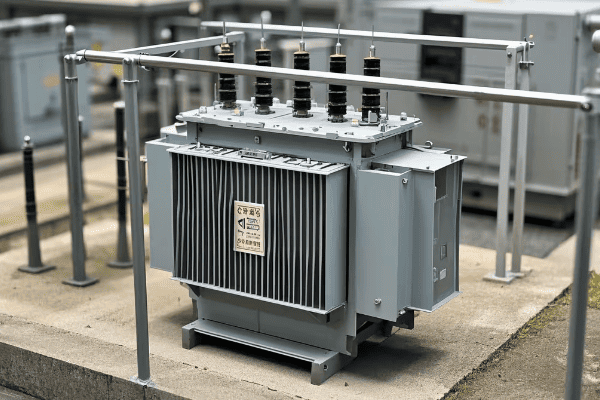
Let’s delve into the suitability of open-wound transformers for industrial use. My experience with various industrial installations will help clarify when these transformers are a good choice and when they’re not.
Advantages of Open-Wound Transformers in Industry
Open-wound transformers have some benefits for industrial use:
-
Cost-Effectiveness:
- Lower initial cost compared to other dry type transformers.
- Can be a budget-friendly option for suitable environments.
-
Efficiency:
- Good efficiency due to direct air cooling of windings.
- Can handle load variations well in appropriate conditions.
-
Size and Weight:
- Generally smaller and lighter than other types.
- Easier to install in space-constrained industrial settings.
I once installed an open-wound transformer in a small, climate-controlled manufacturing facility. Its compact size and lower cost made it an ideal choice for their limited budget and space.
Limitations in Industrial Settings
However, open-wound transformers have significant limitations:
-
Environmental Sensitivity:
- Vulnerable to moisture and dust.
- Not suitable for outdoor use or humid environments.
-
Contamination Risk:
- Exposed windings can accumulate dirt and debris.
- Potential for reduced lifespan in dirty industrial environments.
-
Safety Concerns:
- Less protected against accidental contact.
- May require additional safety measures in some industrial settings.
Suitable Industrial Applications
Open-wound transformers can be appropriate for:
-
Clean Room Environments:
- Electronics manufacturing
- Pharmaceutical production
-
Climate-Controlled Facilities:
- Indoor assembly lines
- Warehouses with stable environments
-
Temporary Installations:
- Short-term industrial projects
- Portable power solutions
Unsuitable Industrial Applications
These transformers are not recommended for:
-
Chemical Plants:
- Risk of corrosive atmospheres
- Potential for chemical contamination
-
Food Processing Facilities:
- Hygiene concerns with exposed windings
- Risk of moisture exposure
-
Heavy Manufacturing:
- High levels of airborne particulates
- Potential for mechanical damage
| Factor | Suitable | Unsuitable |
|---|---|---|
| Environment | Clean, dry, controlled | Humid, dusty, corrosive |
| Application | Light manufacturing, assembly | Heavy industry, chemical processing |
| Maintenance | Regular cleaning possible | Limited access or harsh conditions |
| Safety Requirements | Standard industrial safety | Enhanced safety needs |
| Budget | Limited | Flexible |
In my experience, the decision to use open-wound transformers in industrial settings requires careful consideration of the specific environment and application. While they can be a cost-effective solution in the right conditions, their limitations often make other dry type transformers, like VPI or cast resin, more suitable for many industrial uses. Always conduct a thorough site assessment and consider long-term reliability before choosing an open-wound transformer for industrial applications.
What are the advantages of using encapsulated dry type transformers?
Clients often ask me about encapsulated transformers, especially when they need a robust solution for challenging environments. It’s a type that offers unique benefits in certain situations.
Encapsulated dry type transformers offer superior protection against environmental factors like moisture, dust, and chemicals. They are highly reliable, require minimal maintenance, and can be used in a wide range of applications, including outdoor and harsh industrial settings. Their sealed design also enhances safety and longevity.
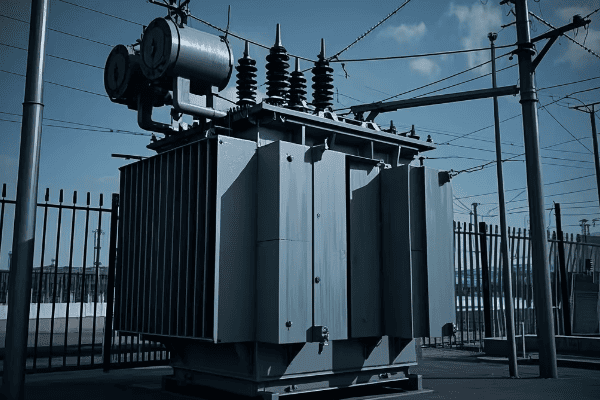
Let’s explore the advantages of encapsulated transformers in detail. My experience with these transformers in various challenging environments will provide valuable insights.
Superior Environmental Protection
Encapsulated transformers excel in harsh conditions:
-
Moisture Resistance:
- Fully sealed against water ingress.
- Ideal for high humidity environments.
-
Dust and Contaminant Protection:
- No entry points for particulates.
- Suitable for dusty industrial settings.
-
Chemical Resistance:
- Epoxy encapsulation resists many chemicals.
- Can be used in corrosive atmospheres.
I once installed an encapsulated transformer in a coastal chemical plant. Its resistance to both salt air and chemical vapors made it the perfect choice for this challenging environment.
Enhanced Safety Features
Safety is a key advantage of encapsulated transformers:
-
Reduced Fire Risk:
- No flammable materials used.
- Excellent fire resistance.
-
Electrical Insulation:
- Complete insulation of live parts.
- Minimizes risk of electrical shock.
-
Quiet Operation:
- Encapsulation reduces operational noise.
- Suitable for noise-sensitive areas.
Minimal Maintenance Requirements
Encapsulated transformers are low-maintenance:
-
Sealed Design:
- No need for regular internal cleaning.
- Reduces risk of contamination over time.
-
Long Lifespan:
- Protected components last longer.
- Fewer replacements needed over time.
-
Simple Inspections:
- Visual checks are often sufficient.
- No need for complex maintenance procedures.
Versatility in Applications
These transformers are suitable for various uses:
-
Outdoor Installations:
- Can withstand rain, snow, and sun exposure.
- Often used in solar and wind energy systems.
-
Marine Environments:
- Resistant to salt spray and high humidity.
- Used in shipboard and offshore applications.
-
Food and Beverage Industry:
- Easy to clean exterior.
- Meets hygiene standards for food processing areas.
-
Mining and Heavy Industry:
- Withstands vibration and mechanical stress.
- Resistant to dust and mineral contaminants.
Compact Design
Encapsulated transformers often have space advantages:
-
Smaller Footprint:
- No need for additional protective enclosures.
- Can be installed in tight spaces.
-
Flexible Mounting:
- Can be mounted in various orientations.
- Suitable for wall or floor mounting.
| Advantage | Benefit |
|---|---|
| Environmental Protection | Suitable for harsh conditions |
| Safety | Reduced fire and shock risk |
| Maintenance | Minimal upkeep required |
| Versatility | Wide range of applications |
| Compact Design | Space-saving installation |
In my experience, encapsulated dry type transformers are an excellent choice for applications where reliability and environmental resistance are crucial. While they may have a higher initial cost compared to other dry type transformers, their long-term benefits in terms of reliability, safety, and reduced maintenance often make them a costoften make them a cost-effective solution in the long run. I’ve seen these transformers perform exceptionally well in some of the most challenging environments, from offshore oil rigs to food processing plants.
How do I choose the right dry type transformer for my project?
Selecting the right dry type transformer can be overwhelming. I’ve had many clients struggle with this decision, unsure of which factors to prioritize for their specific needs.
To choose the right dry type transformer, consider the installation environment, load requirements, budget, and maintenance capabilities. Evaluate factors like moisture exposure, temperature fluctuations, and contaminant presence. Match the transformer type (VPI, cast resin, open-wound, or encapsulated) to your specific needs for optimal performance and longevity.
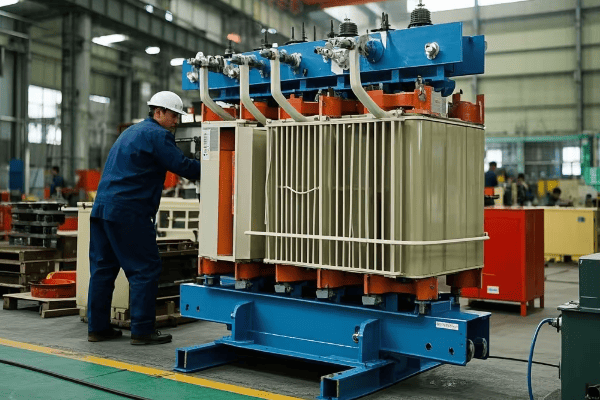
Let’s break down the selection process step by step. My experience in helping clients choose the right transformer will guide you through this important decision.
Step 1: Assess Your Environment
The installation environment is crucial:
-
Indoor vs. Outdoor:
- Indoor: VPI or cast resin are often suitable.
- Outdoor: Consider encapsulated or specially designed cast resin.
-
Humidity Levels:
- High Humidity: Cast resin or encapsulated are best.
- Low Humidity: VPI or even open-wound might suffice.
-
Contaminants:
- Dusty: Avoid open-wound, prefer encapsulated or cast resin.
- Chemical Exposure: Encapsulated or specially treated cast resin.
I once helped a client choose a transformer for a paper mill. The high humidity and paper dust in the air led us to select an encapsulated transformer, which has performed flawlessly for years.
Step 2: Determine Load Requirements
Understanding your power needs is essential:
-
Capacity:
- Calculate your current and future power needs.
- Allow for potential expansion.
-
Load Profile:
- Steady Loads: Any dry type can handle this well.
- Variable Loads: Cast resin or VPI with good overload capacity.
-
Voltage Requirements:
- Ensure the transformer can handle your input and output voltages.
Step 3: Consider Space and Weight Constraints
Physical limitations can narrow your options:
-
Available Space:
- Limited Space: VPI or open-wound are typically more compact.
- Ample Space: Cast resin or encapsulated can be considered.
-
Weight Restrictions:
- Floor Loading Limits: Open-wound or VPI are generally lighter.
- No Restrictions: Any type can be considered.
Step 4: Evaluate Maintenance Capabilities
Consider your ability to maintain the transformer:
-
High Maintenance Capability:
- Regular inspections possible: Any type can be managed.
- Skilled personnel available: Open-wound can be considered.
-
Low Maintenance Capability:
- Limited access: Encapsulated or cast resin are best.
- Minimal oversight: Avoid open-wound types.
Step 5: Assess Budget Constraints
Balance initial costs with long-term value:
-
Limited Budget:
- Short-term: Open-wound or VPI might be suitable.
- Long-term: Consider lifetime costs, not just initial investment.
-
Flexible Budget:
- Invest in cast resin or encapsulated for challenging environments.
- Consider long-term savings from reduced maintenance and longer lifespan.
Step 6: Consider Special Requirements
Some projects have unique needs:
-
Noise Restrictions:
- Low Noise: Encapsulated or specially designed VPI.
- Standard: Any type is generally acceptable.
-
Fire Safety:
- Critical: Cast resin or encapsulated offer the best fire resistance.
- Standard: All dry types offer good fire safety compared to oil-filled.
-
Seismic Requirements:
- High Risk Areas: Specially designed cast resin or encapsulated.
- Low Risk: Standard designs are usually sufficient.
| Factor | VPI | Cast Resin | Open-Wound | Encapsulated |
|---|---|---|---|---|
| Environment | Indoor | Versatile | Clean, Dry | Harsh |
| Maintenance | Moderate | Low | High | Very Low |
| Initial Cost | Moderate | High | Low | Highest |
| Size | Compact | Larger | Most Compact | Compact |
| Best For | General Use | Critical Apps | Cost-Sensitive | Extreme Conditions |
In my experience, choosing the right dry type transformer often involves balancing these factors. I always recommend taking the time to thoroughly assess your needs and consult with experts. The right choice can lead to significant long-term benefits in reliability, efficiency, and cost-effectiveness.
Can dry type transformers handle high voltage applications?
I often get this question from clients working on large-scale projects. There’s a common misconception that dry type transformers are limited to low voltage applications.
Dry type transformers can indeed handle high voltage applications, typically up to 35kV. Advanced designs, particularly in cast resin and some VPI models, can manage even higher voltages. These transformers offer safety and environmental benefits in high voltage scenarios, making them suitable for many industrial and utility applications.
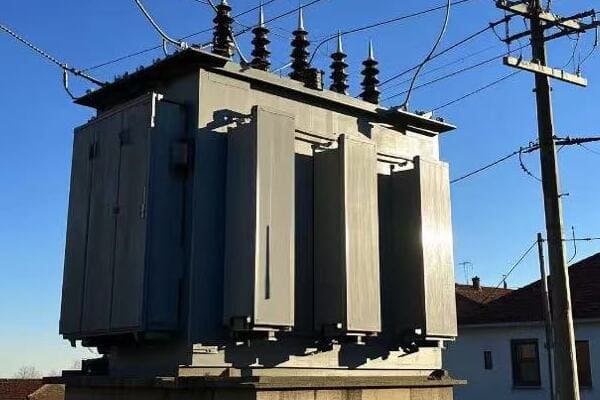
Let’s explore the capabilities of dry type transformers in high voltage applications. My experience with various high voltage installations will provide insights into their performance and limitations.
Voltage Capabilities of Dry Type Transformers
Dry type transformers have come a long way:
-
Standard Voltage Ranges:
- Low Voltage: Up to 1000V
- Medium Voltage: 1kV to 35kV
- High Voltage: Some designs can handle up to 72.5kV
-
Types Suitable for High Voltage:
- Cast Resin: Excellent for high voltage applications
- VPI: Some advanced designs can handle high voltages
- Encapsulated: Specially designed units for high voltage use
I once worked on a project where we installed a 33kV cast resin transformer in a wind farm substation. Its performance was on par with traditional oil-filled units, but with added safety benefits.
Advantages in High Voltage Applications
Dry type transformers offer unique benefits:
-
Safety:
- Reduced fire risk compared to oil-filled transformers
- No risk of oil spills or environmental contamination
-
Maintenance:
- Lower maintenance requirements
- No oil testing or replacement needed
-
Environmental Friendliness:
- No oil disposal concerns
- Suitable for environmentally sensitive areas
-
Indoor Installation:
- Can be installed closer to the load
- Reduces the need for separate transformer rooms
Limitations and Considerations
There are some factors to consider:
-
Cooling:
- High voltage units may require forced air cooling
- Temperature monitoring is crucial
-
Size and Weight:
- May be larger than equivalent oil-filled transformers
- Installation space needs careful planning
-
Cost:
- Initially more expensive than oil-filled types
- Long-term savings in maintenance and safety features
-
Environmental Protection:
- Need proper enclosures for outdoor high voltage applications
- Moisture and contamination protection is crucial
Applications of High Voltage Dry Type Transformers
These transformers are used in various high voltage scenarios:
-
Renewable Energy:
- Wind farms
- Solar power plants
-
Industrial Facilities:
- Steel mills
- Chemical plants
-
Urban Substations:
- Where space and safety are primary concerns
-
Data Centers:
- High power requirements with emphasis on safety
-
Marine and Offshore:
- Oil rigs
- Large ships
| Aspect | Dry Type (High Voltage) | Oil-Filled (High Voltage) |
|---|---|---|
| Voltage Range | Up to 72.5kV | Up to 1200kV |
| Fire Safety | High | Lower |
| Maintenance | Low | Higher |
| Environmental Risk | Minimal | Potential oil leaks |
| Size | Larger | More compact |
| Initial Cost | Higher | Lower |
| Best Use Case | Indoor, sensitive environments | Very high voltage, outdoor |
In my experience, while dry type transformers can effectively handle many high voltage applications, the choice between dry type and oil-filled still depends on specific project requirements. For voltages up to 35kV, and in some cases even higher, dry type transformers often provide an excellent balance of performance, safety, and environmental benefits. However, for very high voltage applications (above 100kV), oil-filled transformers still dominate due to their superior insulation properties at extreme voltages.
What maintenance is required for different types of dry type transformers?
Maintenance is a crucial aspect of transformer ownership that many of my clients overlook initially. Each type of dry transformer has its own maintenance needs, which can significantly impact long-term costs and reliability.
Maintenance requirements vary among dry type transformers. VPI types need regular cleaning and insulation checks. Cast resin transformers require minimal maintenance, mainly visual inspections. Open-wound types need frequent cleaning and insulation testing. Encapsulated transformers have the lowest maintenance needs, typically just external inspections.
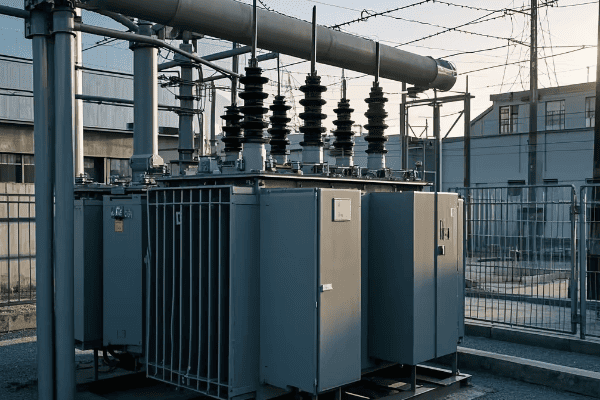
Let’s break down the maintenance requirements for each type of dry transformer. My experience in maintaining various transformer types will help you understand what to expect.
VPI (Vacuum Pressure Impregnated) Transformers
VPI transformers require moderate maintenance:
-
Regular Cleaning:
- Remove dust and debris from windings and core
- Frequency: Annually or semi-annually, depending on environment
-
Insulation Resistance Tests:
- Check for any degradation in insulation
- Frequency: Annually
-
Visual Inspections:
- Look for signs of overheating or physical damage
- Frequency: Quarterly
-
Tightness Checks:
- Ensure all connections are secure
- Frequency: Annually
I once worked with a client who neglected cleaning their VPI transformer. We found a significant buildup of dust, which was affecting cooling efficiency. After a thorough cleaning, the transformer’s performance noticeably improved.
Cast Resin Transformers
Cast resin transformers are known for low maintenance:
-
Visual Inspections:
- Check for cracks or signs of deterioration in resin
- Frequency: Annually
-
Cleaning:
- Light dusting of accessible parts
- Frequency: Annually or as needed
-
Insulation Resistance Tests:
- Less frequent than VPI types
- Frequency: Every 2-3 years
-
Thermal Imaging:
- Check for hot spots
- Frequency: Annually
Open-Wound Transformers
Open-wound types require the most frequent maintenance:
-
Regular Cleaning:
- Crucial to prevent dust accumulation on windings
- Frequency: Quarterly or more in dusty environments
-
Insulation Tests:
- Check for any degradation due to environmental factors
- Frequency: Semi-annually
-
Visual Inspections:
- Look for signs of overheating, discoloration, or damage
- Frequency: Monthly
-
Varnish Touch-ups:
- Reapply varnish if worn off
- Frequency: As needed, typically every few years
Encapsulated Transformers
Encapsulated transformers need minimal maintenance:
-
External Inspections:
- Check for any damage to the encapsulation
- Frequency: Annually
-
Cleaning:
- Wipe down external surfaces
- Frequency: As needed, typically annually
-
Connection Checks:
- Ensure all external connections are secure
- Frequency: Annually
-
Thermal Imaging:
- Optional, to check for any internal issues
- Frequency: Every 2-3 years
| Maintenance Task | VPI | Cast Resin | Open-Wound | Encapsulated |
|---|---|---|---|---|
| Cleaning | Semi-annual | Annual | Quarterly | As needed |
| Insulation Tests | Annual | 2-3 Years | Semi-annual | Not required |
| Visual Inspections | Quarterly | Annual | Monthly | Annual |
| Specialized Tasks | None | Thermal imaging | Varnish touch-up | External checks |
In my experience, proper maintenance is key to the longevity and reliability of any transformer. While some types like encapsulated and cast resin require less frequent attention, regular inspections are still crucial. I always advise my clients to set up a maintenance schedule based on the transformer type and operating environment. This proactive approach can prevent unexpected failures and extend the transformer’s lifespan significantly.
Conclusion
Dry type transformers offer diverse solutions for modern power distribution needs. From VPI to encapsulated types, each has unique advantages. Proper selection and maintenance are key to ensuring reliability, efficiency, and longevity in your power systems. Choose wisely based on your specific requirements.
Free CHBEB Transformer Catalog Download
Get the full range of CHBEB transformers in one catalog.
Includes oil-immersed, dry-type, pad-mounted, and custom solutions.
Quick Message
Request A free quote
We'd like to work with you
- +86 15558785111
- [email protected]
- +86 15558785111
What We Do
CHINA BEI ER BIAN (CHBEB) GROUP, with 218 million in registered capital, originated from Beijing Beierbian Transformer Group. Headquartered in Beijing for R&D, it operates major production bases in Nanjing and Yueqing, producing high-quality products.
Latest Product
address
BeiJing
No 3,RongJing East Road,BeiJing Economic Technological Development Area,BeiJing,China
JiangSu
No 7️Xiangfeng Road,Jiangning,NanJing,JiangSu,China
WenZhou
No.211, Wei 16 Road, Industrial Zone, Yueqing, Wenzhou, Zhejiang, China.
XiangYang Industrial Zone ,YueQing,WenZhou,ZheJiang,China
contact us
- [email protected]
- +86 13057780111
- +86 13057780111
- +86 15558785111
Copyright © Bei Er Bian Group


